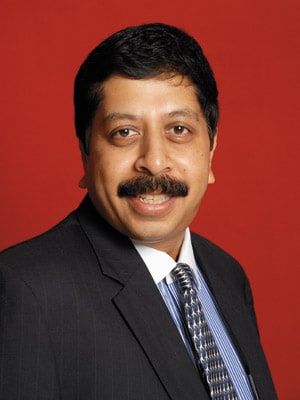
Service is the Key, but not the Door to Success: H Srikrishnan
A founding team member of HDFC Bank and YES Bank, H Srikrishnan believes new players will have to identify and fill the gaps in the market with innovative products
There are three points to note when talking about the context in which entities have applied for bank licences:
- Market opportunities have increased
- Quality banking is still lacking in many areas
- Proliferation has not been well laid out
The situation in 1993-94 when private players were allowed for the first time after nationalisation.
In 1993-94, when new bank licences were issued post-liberalisation, the industry was arrayed at the opposite ends of the spectrum—foreign banks, which were using technology extensively but had only a skeletal branch network, and public sector banks, which had negligible technology but had a vast distribution reach. The new banks positioned themselves in between and captured a large chunk of the market. Since then, they have collectively overtaken foreign banks in terms of business.
Though the level of technology and services increased steadily, sophisticated banking still eluded a large segment of companies and SMEs when the next round of licences were given out. YES Bank and Kotak Mahindra, which, as an NBFC, was already catering to capital market-related entities and had investment banking services, stepped in to exploit that gap in 2003-04.
YES Bank focussed on underbanked niches in sectors such as food and agriculture, IT, pharma and power that were not getting good quality banking services. Kotak expanded its coverage of capital markets, broking, and investment banking.
What will differentiate new players?
The basic services—ATM, online banking etc—are a given today. The challenge would be differentiation in products. There are growth areas available in sectors, such as agriculture (not necessarily farmers but allied to them, such as traders, middlemen, farm infrastructure providers etc.) The new players will have to offer high-end products and services at a low cost. Technology costs have come down and internet and telecom penetration is unprecedented today. The trick for the new players will be to identify and fill the gaps in the market with innovative products.
On Religare’s strategic tie-up with Customers Bank.
The tie-up has more to do with the learnings of the founder of the bank in addition to the bank itself. Customers Bank is focussed on the SME segment, which is also a target for Religare.
Scope for local banks.
If you look at emerging markets such as Malaysia, Indonesia or Thailand, local banks are growing much faster than foreign banks. That is because of their understanding of local issues and ability to tailor products for clients. India is no exception to that. For most players, the objective will be completeness of their product offering.
On talent shortage.
In 1993-94, when a slew of new banks were set up, a large number of professionals working abroad, including me, came back to India. They brought experience and modern expertise to the new banks. It could happen again. Also, the kind of talent that is required today (at the branch level) has changed. Earlier, even a teller would know the overall operation of a branch but now there are specialists for every function. It is true of all service industries. Today, a branch person is an out and out sales guy. Service is the key but not the door to success any more.
(A board member of Religare, H Srikrishnan is also the co-founder and director of Vayana, an enterprise that offers supply chain solutions for financial services)
(As told to Dinesh Narayanan)





